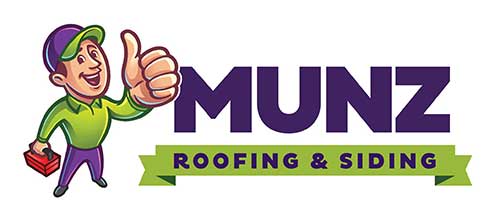Munz Roofing is closely monitoring the effects El Niño will have on Southeastern Pennsylvania and New Jersey this year. With increased predictions of higher than average temperatures in July, and possible more storms during the summer, it’s important to be aware of how this could affect your home.
Because of the warmer temperatures and an increased frequency of East Coast storms, which can cause beach erosion, high winds, heavy snowfall and precipitation, homes in the area are at risk for damage that could require roofing or siding repairs. At Munz Roofing we understand this potential danger and want to help you protect your home from any El Niño-related damage.
Our experienced team is here to inspect your roofing or siding and provide you with the right solutions to keep your home safe this year. Contact us today for more information about how we can help protect your home from the effects of El Niño in Southeastern Pennsylvania and New Jersey.
What is El Niño?
El Niño and La Niña are opposite phases of what is known as the El Niño-Southern Oscillation (ENSO) cycle. El Niño is characterized by warmer than average sea surface temperatures in the central and eastern tropical Pacific Ocean, while La Niña is characterized by cooler than average sea surface temperatures in those same regions. These changes in ocean temperature can cause major shifts in global weather patterns, resulting in unusual weather patterns around the world.
The effects of El Niño conditions on Earth’s climate are generally thought to be more intense and long-lasting than those of La Niña. During an El Niño event, areas around the equator may experience more rain and storms, while areas further away may experience periods of drought. In addition, some parts of the world may see a decrease in hurricanes and tropical storm activity while others see an increase during El Niño years.
In general, an El Niño event means that storm systems will shift toward the poles, which can bring wetter winters to East Coast locations like Southeastern Pennsylvania and New Jersey. The effects of a strong El Niño can persist for up to two years after it dissipates on both the West Coast and the East Coast, meaning that residents should be prepared for possible abnormal or extreme weather conditions for multiple seasons.
This could be shaping up to be one of the more strong El Niño events in recent history, especially after the strong La Niña events recently in the Pacific Ocean. With the climate pattern on the ocean surface (warm water in the equatorial Pacific Ocean along Northern South America) changing very quickly, it could mean you need to be prepared for stronger weather systems over the next year.
What are 10 weather effects that El Niño can have on your house?
1. Warmer temperatures:
The Tri-State area is likely to experience higher than average temperatures in July and possibly beyond.
Roofs can suffer from a variety of damage with warmer temperatures. The most common issue is shingle buckling, which occurs when shingles are exposed to direct sunlight for an extended period of time. As the shingles heat up, they can become brittle and start to curl. This can lead to gaps in the roof which can allow water into the structure, leading to mold growth, rot, and structural damage.
Other issues include cracking due to thermal expansion and contraction, increased wear from UV radiation, and accelerated aging of materials. Additionally, adhesives used in some roofings may fail more quickly in extreme temperatures. To prevent these issues from occurring it’s important to have your roof regularly inspected by a professional roofing contractor like Munz Roofing who can identify and address any potential issues before they become major repairs.
2. Stronger storms:
El Niño winters are often characterized by an increased frequency of East Coast storms, known as Nor’easters that can bring heavy snowfall and precipitation.
Nor’easters can have a significant impact on homes in the Southeastern Pennsylvania and New Jersey area. The heavy snowfall and precipitation associated with these storms can cause serious damage to roofing and siding materials.
The extreme weight of the snow can cause shingles to become brittle and crack, leading to gaps in the roof that can allow water into the interior of your home. The wet conditions also increase the likelihood of ice dams forming along the edge of your roof, creating additional openings that allow water inside. Not only do these issues cause damage to your roof, but they also create an environment conducive to mold growth, rotting wood, and structural damage.
In addition to snowfall, strong winds from Nor’easters can cause major damage as well. These high winds can tear off shingles or loosen siding panels leading to both aesthetic damage as well as potential leaks if not properly addressed.
At Munz Roofing we know how important it is for homes in our area to be protected from Nor’easter storms this year. Our experienced team is here to inspect your roof and siding and provide you with solutions that will help keep your home safe from storm-related damage throughout El Niño season.
3. Increased wind speeds:
Nor’easters are often accompanied by strong winds along the coast, which can cause damage to homes and buildings.
Winds from Nor’easters can cause significant damage to roofs and siding. High winds can tear off shingles or loosen siding panels, leading to both aesthetic damage as well as potential leaks if not properly addressed.
Strong winds also put a lot of strain on roofing materials, causing them to become brittle and crack over time. This can lead to gaps in the roof which can allow water into the interior of your home, leading to mold growth and rotting wood. Additionally, wind-driven debris such as tree branches or hail can pierce through roofs and siding, allowing moisture into the home and creating an environment for further damage.
In order to help reduce the risk of wind damage, it’s important to inspect your roof regularly for signs of wear and tear from high winds. Additionally, reinforcing your roof with additional fasteners or clips can help keep shingles in place during strong storms. Munz Roofing is experienced in providing these solutions for our customers and we are here to help protect your home from any El Niño-related damage this year.
4. Beach erosion:
Along with strong winds, El Niño winters can lead to beach erosion due to the increased frequency of storms and high tides along the coastline.
El Niño winters can lead to beach erosion due to the increased frequency of storms and high tides along the coastline. Beach erosion can cause significant damage to homes on the coast, as strong winds and waves can erode away soil, exposing foundations and other structures to potential damage. Additionally, the powerful waves can cause flooding and water damage to homes in the area.
5. Flooding:
El Niño fueled storms can cause flooding in areas that are already prone to it such as near rivers or streams or low lying areas.
Flooding can cause major damage to homes in the Southeastern Pennsylvania and New Jersey area. Flood waters have the potential to seep through weak points in your home’s foundations, walls, windows, doors, roofs and siding. This can lead to serious structural damage as well as water penetration into the interior of your home.
When water gets inside of a home, it can cause major issues such as rot, mold growth and even corrosion of electrical systems. Additionally, any furniture or other items inside the house can become soaked with moisture, leading to further damage and an increased risk for contamination from hazardous materials or microbes.
At Munz Roofing we understand the potential danger that flooding poses to our customers and we are here to help protect your home from El Niño-related flooding this year. Our experienced team is available to inspect any weak points or damages that could make your home vulnerable to flooding and provide you with solutions that will help keep your home safe from water penetration.
6. Drought conditions:
While some areas may experience increased rainfall during an El Niño year, other areas could see a decrease in precipitation leading to drought-like conditions.
Extreme heat can cause significant damage to siding and roofing materials. As the temperature rises, siding panels may experience thermal expansion and contraction which could lead to cracking or warping. Additionally, the intense UV radiation from direct sunlight can accelerate the aging of siding material such as vinyl, causing it to become brittle and more susceptible to other forms of damage.
Heat exposure can also have an effect on roofing materials, causing shingles to buckle or curl when exposed to direct sunlight for an extended period of time. This type of damage is commonly known as “shingle buckling” and can result in gaps in the roof that allow water into the interior structure, leading to mold growth, rot, and structural damage. Adhesives used in some roofings may also fail more quickly in extreme temperatures.
7. Heat waves:
Areas experiencing warmer than normal temperatures could also be at risk for heat waves if there is an extended period of unseasonably warm weather during the summer months.
Heat exposure can cause a number of issues for roofs. High temperatures can cause asphalt shingles to become brittle, leading to cracks or splits. Additionally, intense UV radiation from direct sunlight can accelerate the aging of roofing materials such as asphalt shingles, causing them to become brittle.
8. Wildfires:
In addition to drought-like conditions, dry vegetation caused by lack of rain can make areas more susceptible to wildfires during El Niño years and beyond.
Wildfires can cause significant damage to roofing and siding materials. Intense heat from the flames can cause shingles to become brittle and crack, leading to gaps in the roof that allow water inside. The intense heat also increases the likelihood of adhesives used in some roofings failing quickly, resulting in loose shingles or panels.
Siding can also be damaged by the heat from wildfires, causing it to warp or become brittle. In addition, the flames from nearby wildfires may be hot enough to actually melt siding material in some cases.
9. Reduced air quality:
Smoke from fires and other pollutants released into the atmosphere due to increased temperature levels can contribute to poor air quality for those living in affected areas during an El Niño event.
El Niño events in the tropical Pacific can lead to dry conditions, which could cause an increased risk of forest fires. The heat and lack of moisture associated with El Niño can cause vegetation to become drier than normal. This, combined with strong winds in El Niño years, can create the perfect conditions for wildfires to start and spread quickly.
10. Damage from hail storms:
Nor’easter often bring hail storms
Hail storms can cause serious damage to roofing and siding materials. The force of the hail is strong enough to puncture shingles or crack siding panels, leading to both aesthetic damage as well as potential leaks if not properly addressed.
Hail-driven debris such as tree branches or other objects can pierce through roofs and siding as well, leading to further damage from moisture penetration.
Why choose Munz Roofing if you have any issues from El Niño?
At Munz Roofing we understand the potential danger that hail storms pose to your roof and siding and we are here to help protect your home from El Niño-related damage this year. Our experienced team is available to inspect any weak points or damages that could make your home vulnerable to hail damage and provide you with solutions that will help keep your home safe.




